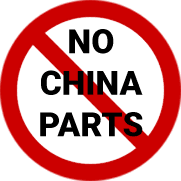What Is an Aircraft Radar Beacon Transmitter and How Does It Work?
Air traffic controllers (ATC) are primarily concerned with the safety of aircraft, ensuring that they are efficiently directed to meet time constraints while avoiding hazards. Radar beacon transponders, or simply transponders, are devices that allow for the location of an aircraft to be constantly displayed on ATC radar screens. To further the ability of monitoring, aircraft that have an altitude encoder will also have their pressure altitude sent to ATC.
The secondary radar system, or secondary surveillance radar (SSR), is a device used by ATC to increase the quality of data that they use for tracking aircraft. With the SSR, ATC can obtain information such as altitude, allowing for a third dimension to be added to tracking for monitoring positioning. To receive such data, coded pulse trains are transmitted by the radar and are picked up by the onboard transponder of a given aircraft. Next, ATC will establish verbal communication with the pilot, instructing them to send a digital octal code through the transponder. With a sent message and a reply, ATC can further confirm the location of an aircraft by altering the symbol displayed on the radar screen. If ATC wishes to monitor a specific aircraft, a control on the transponder will allow for the aircraft symbol to be highlighted on the radar PPI.
In order to fully confirm the altitude of a tracked aircraft, the transponder will need to be placed in ALT or Mode C position. By doing this, the signals sent back to ATC will include pressure altitude values. Generally, pressure altitude is provided to the transponder by an altitude encoder that is electrically connected to the transponder.
While the process of tracking a single aircraft can be considered fairly simple, it becomes more complex when you consider how many aircraft are being actively tracked at one time. To maintain optimal monitoring and safety, aircraft are assigned a unique identity code that is displayed on the ATC PPI, and pilots will respond to this code when receiving signals. With modern flight data processor computers, increased information can be offered to ATC to further their endeavors.
As transponders ensure proper flight operations and safety, it is paramount that they are regularly inspected and tested in accordance with FAA regulations. Generally, transponder tests and inspections should be held every 24 calendar months, and such procedures must be carried out at an appropriately rated repair station, with the original manufacturer, or a holder of a continuous airworthy program. If errors occur within the transponder, altitude encoder, or other related devices, they should be immediately repaired or replaced as necessary to maintain airworthiness. If you find yourself in need of various aircraft parts and components that you can steadily rely on with ease, there is no better alternative to ASAP Parts 360.
Owned and operated by ASAP Semiconductor, ASAP Parts 360 is a premier online distributor of aircraft parts with over 2 billion new, used, obsolete, and hard-to-find items readily available for purchase at any time. With our dedication to quality, we ensure that every item that we offer has come from a reputable manufacturer and has undergone all the necessary quality assurance measures to guarantee reliability. Furthermore, our NO CHINA SOURCING pledge guarantees that all items ship alongside their qualifying certifications and manufacturing trace documentation, as applicable. As a result of our steadfast commitment to quality, we conduct operations with AS9120B, ISO 9001:2015, and FAA AC 00-56B certification and accreditation. Get started on the purchasing process today with a quote for your comparisons and see why customers choose to steadily rely on ASAP Parts 360 for all their operational requirements.


